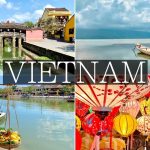
Something you can know about Vietnam folk music
Do you think that it is so nice to get to know about Vietnam folk music? Now, read to know if experiencing some activity with one of the specific folk music types in Vietnam is actually deserving!
Northern Vietnam folk music
Chèo

Chèo is a genre of satirical music. Slow dances are often featured in the performances of this music type. In the Vietnam’s countryside, it is typically performed as an outdoor entertainment activity by semi-amateur groups. The place where the activity takes place may be the courtyard of a public area or a village square. However, you will also find Cheo has been more common in indoor theaters performed more professionally.
Hát xẩm

It is known that Hat xam used to be a popular type of traditional Vietnamese music of the North, but the regrettable thing is that it has become more and more endangered today due to some modern forms of music imported overseas. In the former time, the performers of Hat xam were often blind artists; they roam around the crowded areas and sang for coins. One interesting thing about this folk music is that it usually goes with specific instruments, such as monochord or Vietnamese two-cord fiddle. It is believed that the melodies of Xam get you so surprised since it is actually more different than you think.
Quan họ

With excellent melodies influencing the audience’s hearts and unique style of performing (singing as responding), Quan ho has been designated as a UNESCO intangible cultural heritage in 2009. If you take an opportunity to visit Bac Ninh Province, Vietnam in the spring, especially in Tet Holiday, it is right time for you to experience this form of Vietnamese traditional music. It is easy to bump into it since it is associated with spring festivals in which pairs of boys and girls are performing Quan ho as if they are making words in a normal dialogue between them smile and dance.
Central Vietnam folk music

Hue Royal Court Music (Nhã nhạc cung đình Huế) is exactly the outstanding Central Vietnam folk music. In the feudal society, the Hue Court Music encompassed types of music for opera and dancing and was performed in truly special occasions, such as worshiping ceremonies, and festivities for the national court or merely used for entertaining the kings and royal families. It is possible to say that the traditional music is the quintessence of spiritual life in the Vietnamese royal courts through over 1,000 years. In 2013, thanks to its hidden values, Hue Royal Court Music was recognized as one of the Oral and intangible heritage of Vietnam.
Southern Vietnam Folk Music
Hò
Despite the fact that there are many differences in melodies, Hò is also quite similar to Quan họ in the North in terms of the style of singing. It is performed by girls and boys as if they are in a dialogue with the improvisational singing. The theme of this music form may be courtship, love, rural areas, etc.
Cải lương

Cải lương is referred to as a kind of modern folk opera which is nowadays common, compared to the others in Vietnam. Occurring to the Vietnam music community in the beginning of the 20th century, Cải lương has gradually been popularized to the world as a national theatrical form. It is supposed to be a fusion of classical music, modern spoken drama, and hát tuồng derived from Chinese opera.
Đờn ca tài tử

Đờn ca tài tử, developing in the 19th century is the type of Vietnamese traditional music, now found most popular in the Mekong Delta. In the past, it was the music of peasants and inhabitants in the idyllic regions, but nowadays it is also performed in sparkling stages in large cities due to the great values behind it. Have a try at this music type when you join in a Mekong Delta trip to know why it has been listed as the Intangible Cultural Heritage of Humanity by UNESCO.
Source: tnktravel




